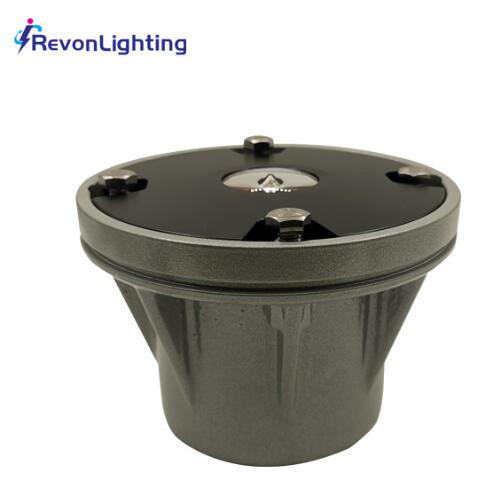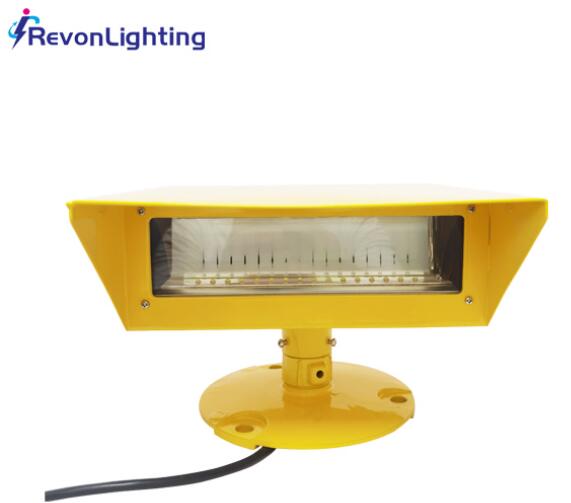Posted: 2024-07-01
Heliport lighting systems are essential components of aviation infrastructure, designed to enhance the safety and efficiency of helicopter operations, particularly during nighttime and low-visibility conditions. These systems provide crucial visual cues and guidance for pilots, facilitating safe landings, takeoffs, and overall operational effectiveness. This article explores the significance of heliport lighting systems, their various components, technological advancements, applications, and considerations for implementation and maintenance.
Importance of Heliport Lighting Systems
Enhancing Safety
The primary function of a heliport lighting system is to enhance safety by providing clear visual guidance for pilots. During night operations or in adverse weather conditions, these lighting systems ensure that the heliport and its surroundings are adequately illuminated, reducing the risk of accidents and ensuring a safe approach and landing.
Supporting Emergency Operations
Heliport lighting systems are indispensable for emergency medical services (EMS), search and rescue missions, and disaster response. These lights enable helicopters to locate and access heliports quickly and safely, even in challenging conditions. In critical situations, the presence of a reliable lighting system can significantly improve response times and outcomes.
Ensuring Regulatory Compliance
Aviation authorities such as the Federal Aviation Administration (FAA) and the International Civil Aviation Organization (ICAO) have stringent guidelines regarding heliport lighting. Heliport lighting systems are designed to meet these standards, ensuring compliance and legal operation. Adhering to these regulations is essential for the certification and ongoing use of heliports.
Improving Operational Efficiency
By providing continuous and reliable illumination, heliport lighting systems contribute to operational efficiency. They enable uninterrupted helicopter operations regardless of the time of day or weather conditions, which is particularly important for critical services like EMS and law enforcement. The lighting system ensures that these operations can proceed smoothly, enhancing overall effectiveness.

Components of Heliport Lighting Systems
Perimeter Lights
Perimeter lights outline the boundaries of the heliport, providing a clear visual indication of the landing area. These lights are typically low-profile fixtures placed at regular intervals around the heliport, ensuring that the perimeter is easily identifiable from the air.
Flood Lights
Flood lights provide broad, intense illumination that covers the entire landing area and its immediate surroundings. These lights help pilots assess the condition of the heliport and identify any potential obstacles, enhancing safety during landings and takeoffs.
Approach Lights
Approach lights guide pilots during the final approach to the heliport. These lights are arranged in a specific pattern, leading the pilot towards the center of the landing area. They are especially useful in low-visibility conditions, ensuring a safe and accurate approach.
Touchdown and Lift-Off Area (TLOF) Lights
TLOF lights are installed within the central landing area, indicating the precise touchdown and lift-off point for helicopters. These lights are critical for guiding pilots to the exact landing spot, ensuring safe and efficient operations.
Wind Direction Indicator Lights
Wind direction indicators, such as lighted windsocks, provide pilots with real-time information about wind speed and direction. These indicators are essential for making informed landing and takeoff decisions, especially in variable wind conditions.
The heliport beacon is a powerful flashing light visible from a distance, helping pilots locate the heliport during nighttime or low-visibility conditions. The beacon's distinct flashing pattern makes it easily recognizable, providing a reliable reference point for pilots.
Technological Advancements
LED Technology
Modern heliport lighting systems often utilize LED (Light Emitting Diode) technology, which offers several advantages over traditional lighting systems:
Lower Energy Consumption: LEDs consume significantly less power, reducing operational costs.
Longer Lifespan: LEDs have a much longer operational life, minimizing the need for frequent replacements.
Brightness and Clarity: LED lights provide a bright, clear light that enhances visibility for pilots.
Instant Activation: LEDs reach full brightness instantly, which is critical for immediate guidance in emergency situations.
Solar-Powered Systems
Solar-powered heliport lighting systems harness solar energy during the day to power the lights at night. This sustainable solution is particularly beneficial in remote or off-grid locations where access to electricity is limited. Solar-powered systems reduce the need for extensive electrical infrastructure and offer a cost-effective, environmentally friendly alternative.
Intelligent Control Systems
Recent advancements have led to the integration of intelligent control systems in heliport lighting. These systems optimize performance based on real-time conditions, such as ambient light levels and weather. Intelligent controls can adjust the light intensity and activation times to ensure optimal visibility at all times, enhancing safety and efficiency.

Wireless Connectivity
Heliport lighting systems equipped with wireless connectivity can be controlled remotely. Operators can adjust settings, monitor performance, and activate or deactivate lights from a central location using wireless controllers or mobile devices. This remote control capability enhances convenience and operational efficiency, allowing for quick adjustments as needed.
Integration with Other Systems
Heliport lighting systems can be integrated with other navigational and communication systems to enhance overall operational safety. For example, they can be synchronized with GPS systems, automated weather stations, and flight tracking systems to provide comprehensive guidance to pilots. This integration ensures that all relevant information is available in real-time, improving situational awareness and decision-making.
Applications of Heliport Lighting Systems
Hospital Heliports
In hospital settings, heliport lighting systems are essential for facilitating safe landings and takeoffs, particularly for emergency medical services (EMS). These lights ensure that medical helicopters can quickly and accurately locate hospital heliports, improving response times and patient outcomes.
Offshore Platforms
Heliport lighting systems are critical for offshore platforms such as oil rigs. They provide essential illumination for helicopter pilots navigating challenging sea conditions and weather. The lighting systems ensure safe and efficient operations, even in the most demanding environments.
Urban Heliports
In densely populated urban areas, heliport lighting systems help pilots navigate through complex environments with tall buildings and other obstacles. The lights provide a clear visual reference point, reducing the risk of collisions and ensuring safe operations in urban settings.
Military and Rescue Operations
Military bases and search and rescue missions rely heavily on heliport lighting systems. These lights provide crucial illumination in various terrains and under different operational scenarios, ensuring that helicopters can locate and access landing zones quickly and safely.
Remote and Mountainous Areas
In remote and mountainous regions, heliport lighting systems enhance safety by providing reliable illumination of the approach path and landing area. These areas often lack traditional navigational aids, making the presence of a comprehensive lighting system crucial for safe helicopter operations.
Considerations for Implementation
Initial Investment and Cost-Benefit Analysis
While the initial cost of installing a heliport lighting system may be significant, the long-term benefits and savings are substantial. Conducting a thorough cost-benefit analysis is crucial to understand the potential return on investment and justify the upfront expenses. Factors such as energy savings, reduced maintenance costs, and enhanced safety should be considered.
Location and Environmental Factors
The effectiveness of heliport lighting systems depends on the specific location and environmental conditions. For instance, areas with frequent fog or adverse weather might require lights with higher brightness levels or additional features to ensure visibility. Similarly, remote locations may benefit more from solar-powered systems due to the lack of reliable grid power.
Regulatory Compliance
Ensuring that the chosen lighting system complies with aviation standards and regulations is essential. This includes not only the type and placement of lights but also their brightness, color, and operational characteristics. Compliance with FAA, ICAO, and other relevant authorities is crucial for legal and safe operations. Consulting with regulatory bodies during the planning and implementation stages can help ensure compliance and avoid potential issues.
| heliport lighting system | Heliport flood light |
| 12 | 13 |
Maintenance and Lifespan
Understanding the maintenance requirements and expected lifespan of heliport lighting systems is important for long-term planning and budgeting. While modern systems, especially LEDs and solar-powered lights, generally require less maintenance, regular inspections and servicing are still necessary to ensure optimal performance. Developing a maintenance schedule and training personnel on proper maintenance procedures can help extend the lifespan of the lighting system and ensure its reliability.
Integration with Existing Infrastructure
For heliports with existing lighting systems, integrating new components may require additional planning and modifications. Assessing the compatibility and potential benefits of upgrading or integrating new lights into the existing infrastructure can help operators make informed decisions. Considerations such as electrical compatibility, mounting requirements, and potential disruptions during installation should be evaluated.
Conclusion
Heliport lighting systems are a vital component of aviation infrastructure, providing essential illumination that ensures the safety and efficiency of helicopter operations. Their importance cannot be overstated, as they enable pilots to locate and approach heliports accurately, even in challenging conditions. Technological advancements such as LED and solar-powered lights, intelligent control systems, and wireless connectivity have significantly enhanced the performance and reliability of heliport lighting systems.
Investing in high-quality heliport lighting systems is essential for enhancing safety, operational efficiency, and long-term cost savings. As the demand for helicopter services continues to grow, the importance of reliable and effective heliport lighting systems will remain paramount. By understanding the different components of heliport lighting systems, their benefits, and the factors influencing their implementation, operators can make informed decisions that ensure the safety and success of their operations.